When the Tesla Model S first burst onto the scene, it undeniably revolutionized the automotive world. It was unique, unprecedented, and frankly, in a league of its own. For years, no other electric vehicle could touch its range, performance, or technological prowess. While mainstream automakers have finally begun to close the gap, Tesla’s more accessible offering, the refreshed 2024 Tesla Model 3 Highland, is now facing stiffer competition and arguably, some of its original appeal has diminished.
The Model 3 I test drove was equipped with a dual-motor setup and Tesla’s touted “Full Self-Driving” system. My time with the vehicle was limited, but it was sufficient to form a solid impression. My overall conclusion? Consider alternatives like the Hyundai Ioniq 6.
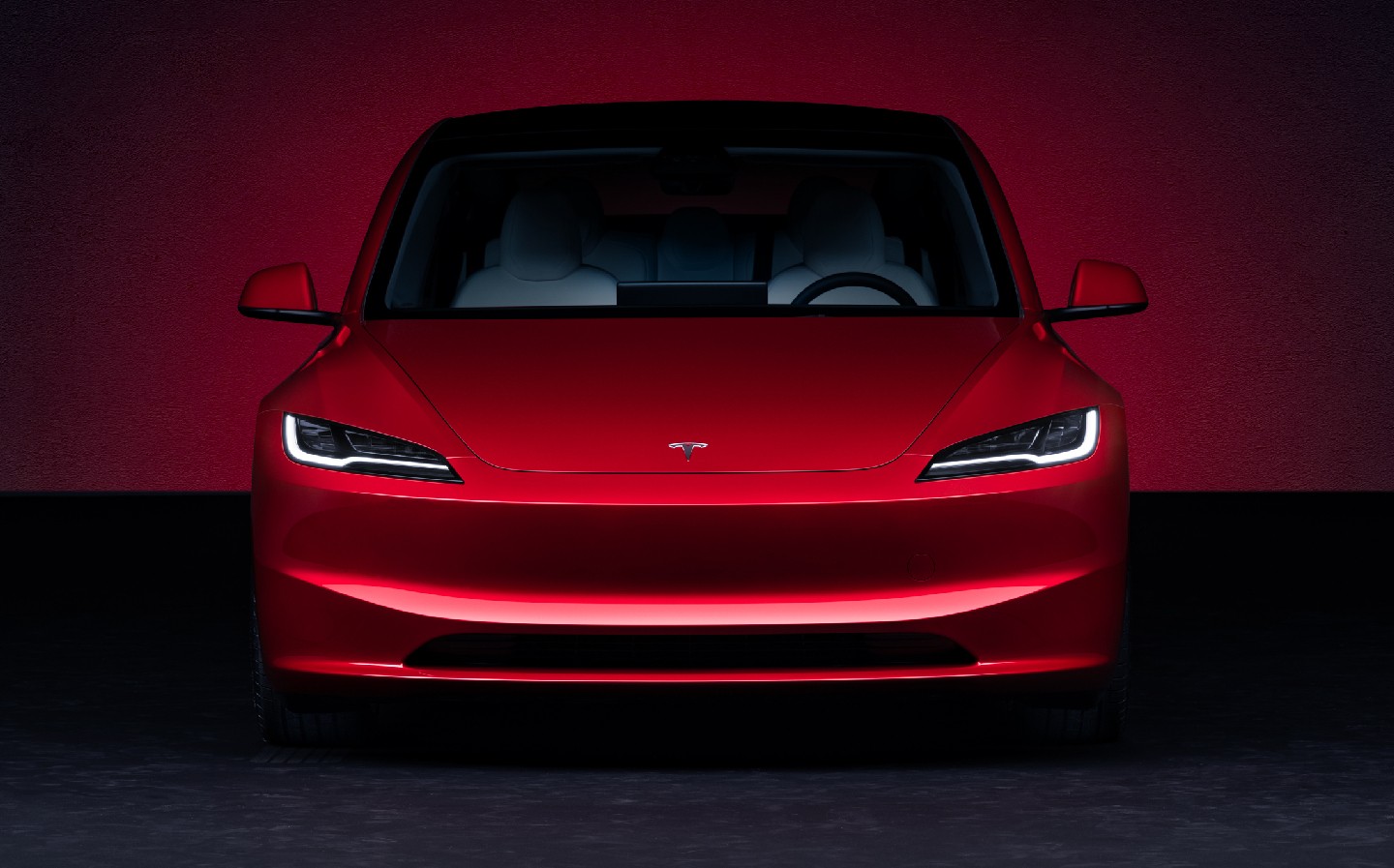 Front three-quarter view of the refreshed 2024 Tesla Model 3 Highland in Space Gray, showcasing its sharper headlight design.
Front three-quarter view of the refreshed 2024 Tesla Model 3 Highland in Space Gray, showcasing its sharper headlight design.
Design and Aesthetics: A Refreshed Look
I vividly recall the late night in 2017, Eastern Time, when Tesla unveiled the Model 3. It was a significant moment, perhaps not quite the seismic shift of the Model S, but a major event nonetheless. Finally, Tesla offered a more attainable electric sedan, boasting superior range at a competitive price point. However, substantial updates took six long years. In the traditional automotive world, brands like BMW, Mercedes, and Audi would have cycled through entire model generations in that timeframe. Now, the updated Model 3, dubbed the Highland, brings improvements, but also introduces some drawbacks.
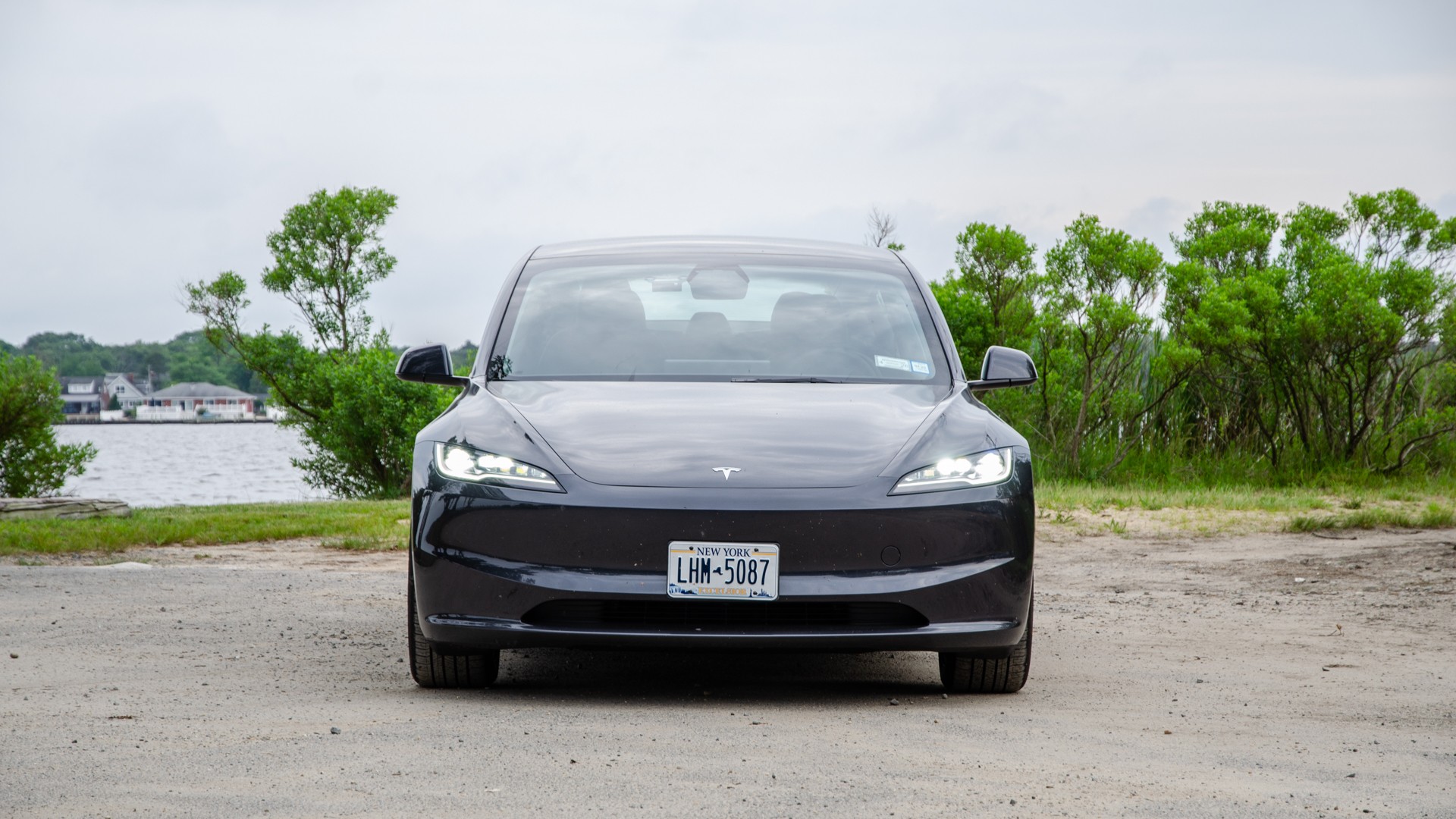 Three-quarter view of the 2024 Tesla Model 3 Highland in Space Gray, showing its overall updated exterior design.
Three-quarter view of the 2024 Tesla Model 3 Highland in Space Gray, showing its overall updated exterior design.
From an exterior perspective, the Model 3 Highland is undeniably more visually appealing than its predecessor. The headlights are now slim and sharp, the front is more pointed, and the taillights exude a more premium feel. While it still retains a somewhat jelly bean-like shape and can appear bland in grayscale colors, it’s a clear aesthetic upgrade from the original 2017 design.
Stepping inside, however, reveals a largely unchanged environment, which is to say, disappointing. While I generally avoid harsh criticism of interior design unless it severely impacts the driving experience, the Model 3’s interior falls into that category. The seats are subpar (though the new Performance model seats are reportedly much better), the materials throughout feel distinctly low-rent, and the ergonomic choices can genuinely compromise safety.
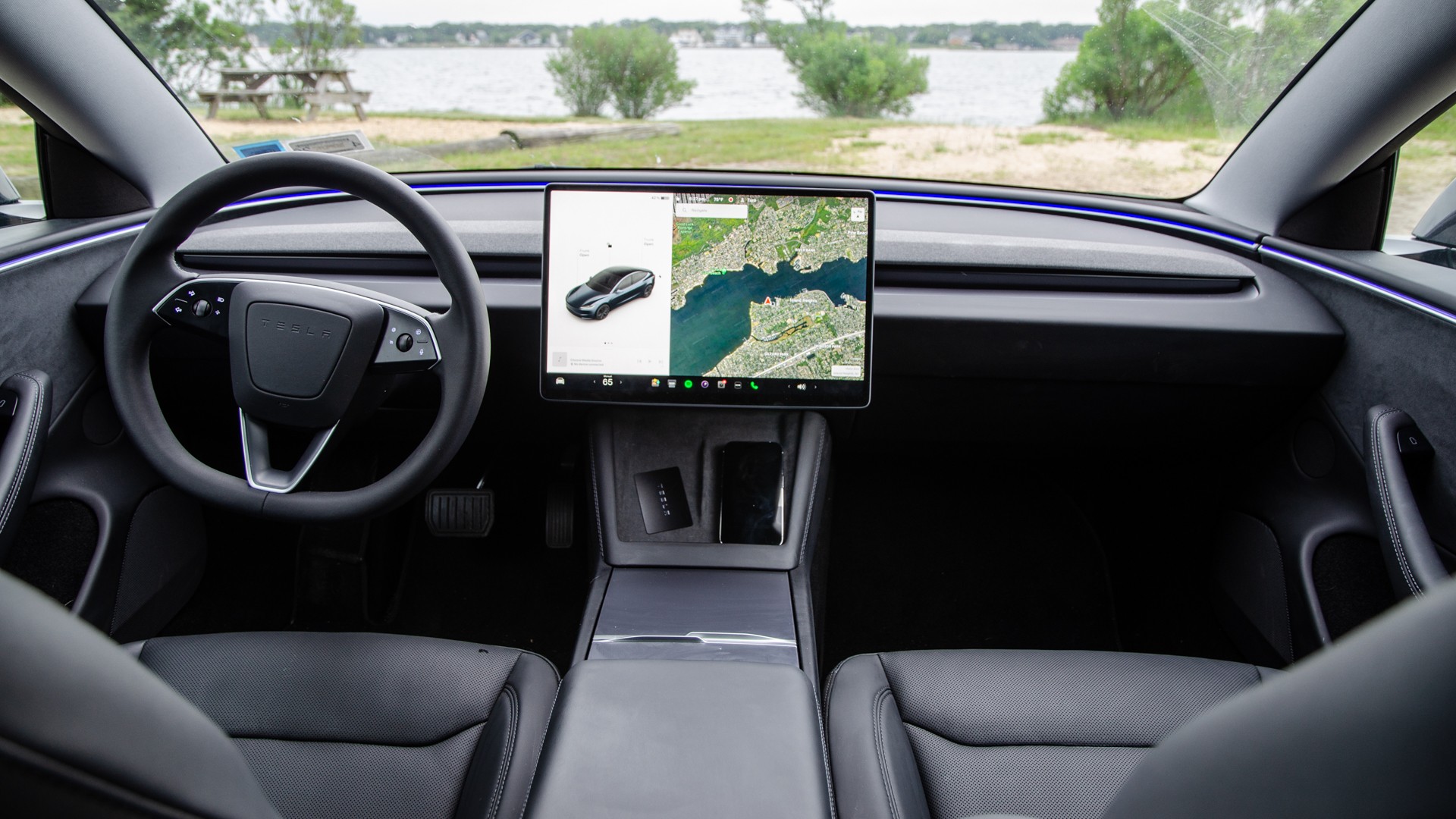 Interior of the 2024 Tesla Model 3 highlighting the minimalist dashboard, large touchscreen, and econobox-cheap materials.
Interior of the 2024 Tesla Model 3 highlighting the minimalist dashboard, large touchscreen, and econobox-cheap materials.
Ergonomics and User Interface: Touchscreen Troubles
In typical Tesla fashion, the Model 3 eliminates traditional controls like a wiper stalk or side mirror adjustments. Even steering wheel adjustments are absent from the column. Everything, and I mean absolutely everything, is funneled through the massive central touchscreen. This tablet-style interface is burdened with a confusing array of menus and tiny, smartphone-like icons. Not only does this demand taking your eyes off the road, but it also requires focused attention to accurately tap the small, visually similar icons. The menu system’s aesthetic echoes an iPad, which is fine when stationary, but incredibly distracting while driving.
It’s an infuriatingly unintuitive system, arguably the worst user interface encountered on any device. Adding to the ergonomic woes, Tesla has relocated the gear selector to the touchscreen in the Model 3. Shifting into drive requires pressing the brake and then swiping a thin bar upwards on the left side of the screen. Reverse is engaged by swiping down. While it functions adequately, it frequently failed to register my swipes during my brief test.
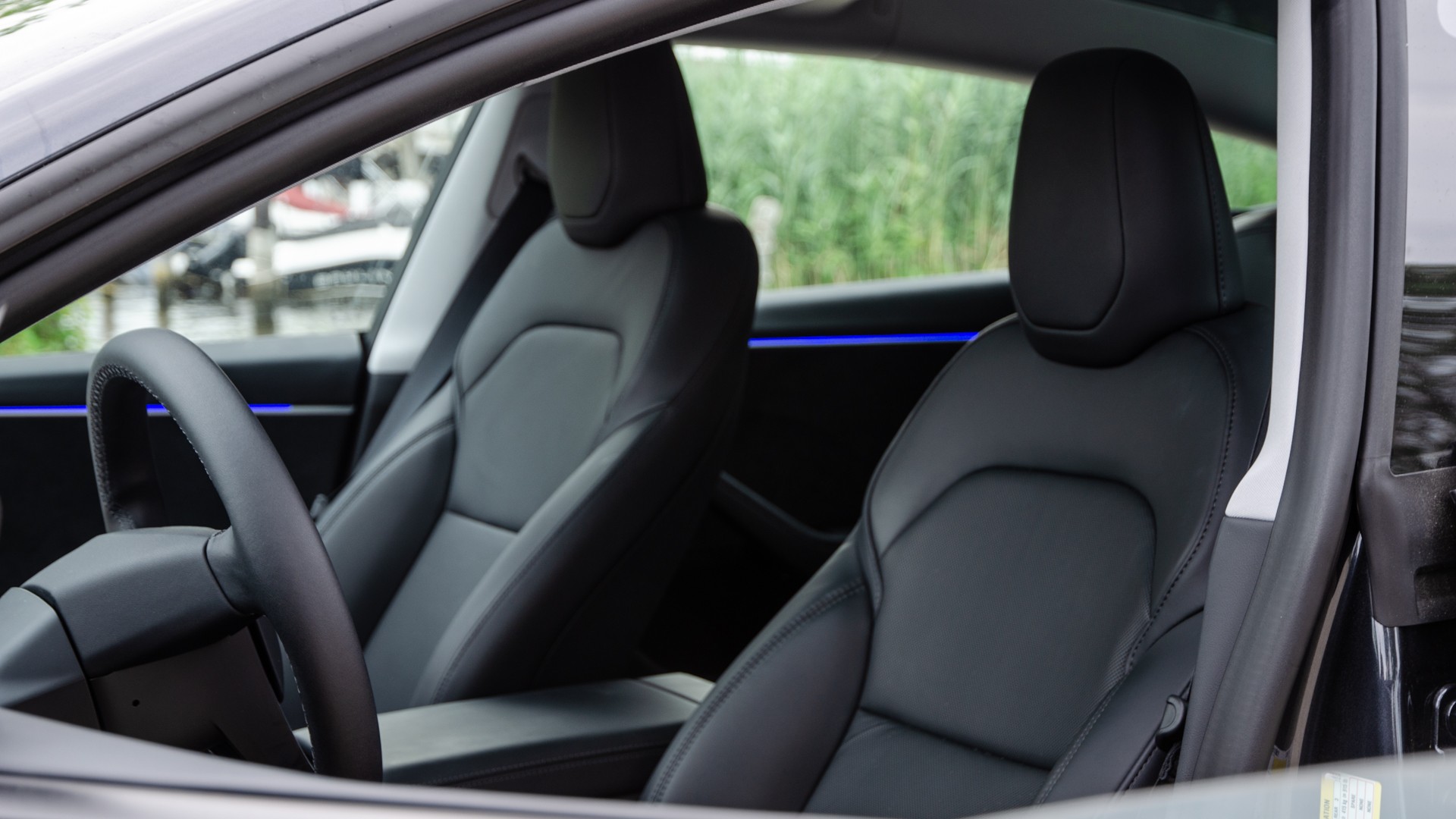 Close-up of the climate control and other vehicle function icons on the 2024 Tesla Model 3 touchscreen.
Close-up of the climate control and other vehicle function icons on the 2024 Tesla Model 3 touchscreen.
Redundant gear selection buttons do exist, but their placement is equally perplexing. They are integrated into the interior lighting panel on the headliner, between the sun visors. Designed as a secondary control, these buttons only illuminate when activated. Attempting to turn on a dome light while driving could easily lead to accidentally pressing a drive button, triggering a loud warning beep as the car alerts you to the impossibility of reversing while in motion. The cabin design feels as if it was conceived by someone unfamiliar with basic automotive usability.
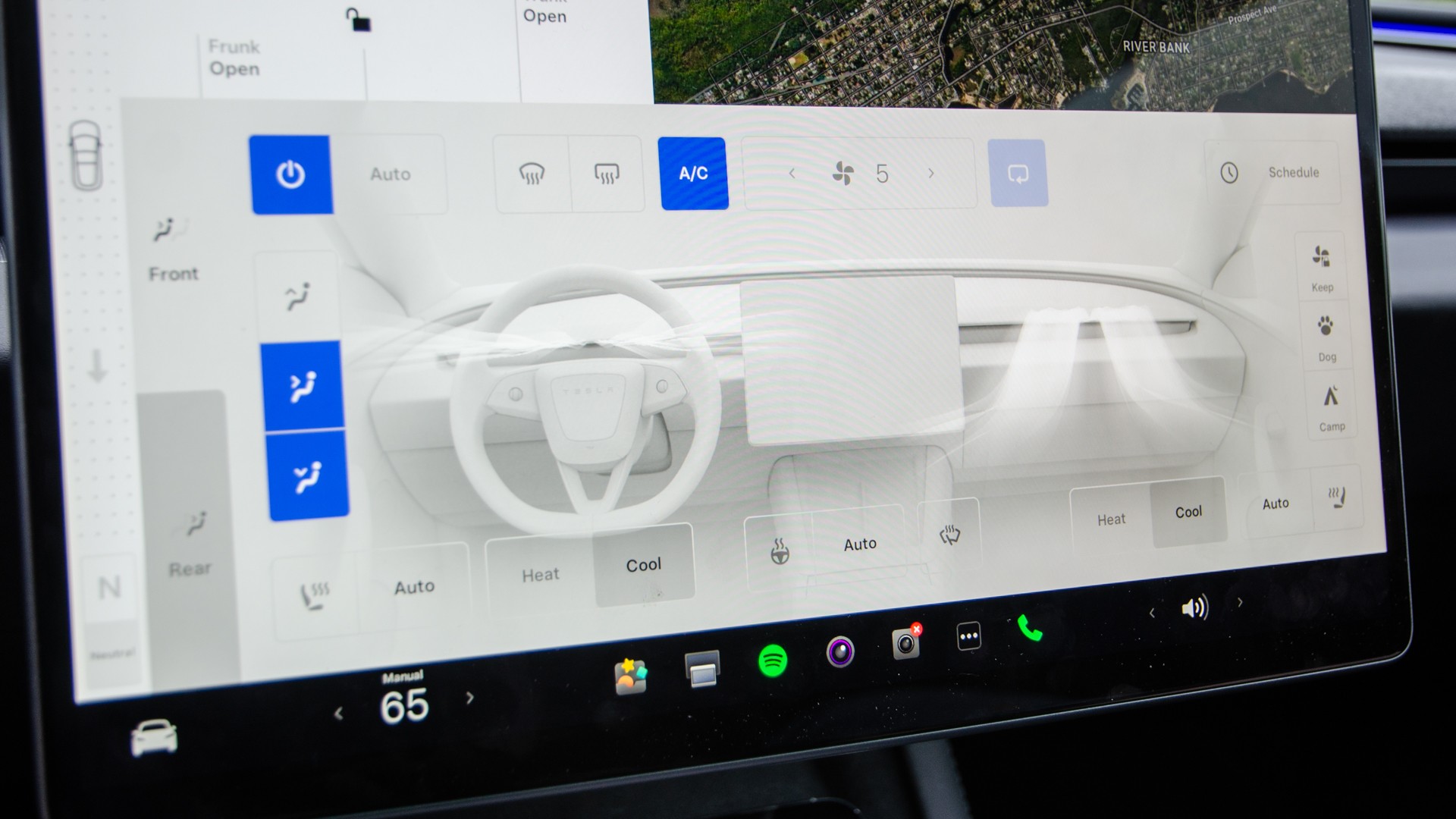 Driver's perspective of the 2024 Tesla Model 3 interior, highlighting the lack of traditional controls and reliance on the touchscreen.
Driver's perspective of the 2024 Tesla Model 3 interior, highlighting the lack of traditional controls and reliance on the touchscreen.
Driving Performance: Speed and Handling
Fortunately, the Model 3 retains its brisk acceleration, offering a welcome distraction from the frustrating controls. The dual electric motors deliver 394 horsepower and 377 lb-ft of torque, launching the Model 3 with surprising force, almost negating the need for the Performance variant. Sixty miles per hour arrives in a mere 4.2 seconds, only a hair slower than the BMW i4 M50. For most drivers, more speed is unnecessary, and subjectively, the dual-motor Model 3 feels nearly as quick as the BMW.
Initial impressions of the original Model 3 lauded its driving dynamics, comparing them favorably to the BMW 3 Series and even suggesting it was among the best sports sedans available. Having now driven the refreshed version, I must disagree with that assessment. While competent, it falls short of “great.” The steering is excessively sensitive, bordering on artificial, and the self-centering action feels unnaturally rubbery and ultimately irritating. Accuracy is present, but feedback is absent, and the overly quick steering ratio contributes to a twitchy feel at higher speeds.
The ride quality is firm, even brittle. On smooth pavement, it feels planted and secure. However, sharper road imperfections disrupt this composure. It’s not overtly harsh, but it lacks the refinement and comfort found in vehicles like the BMW i4 or Polestar 2. It aligns more closely with the Hyundai Ioniq 6 in ride quality. While cornering can be enjoyable, a pervasive rubbery and artificial sensation prevents genuine driver engagement. In summary, it’s an adequate sport sedan, but not a truly exceptional one.
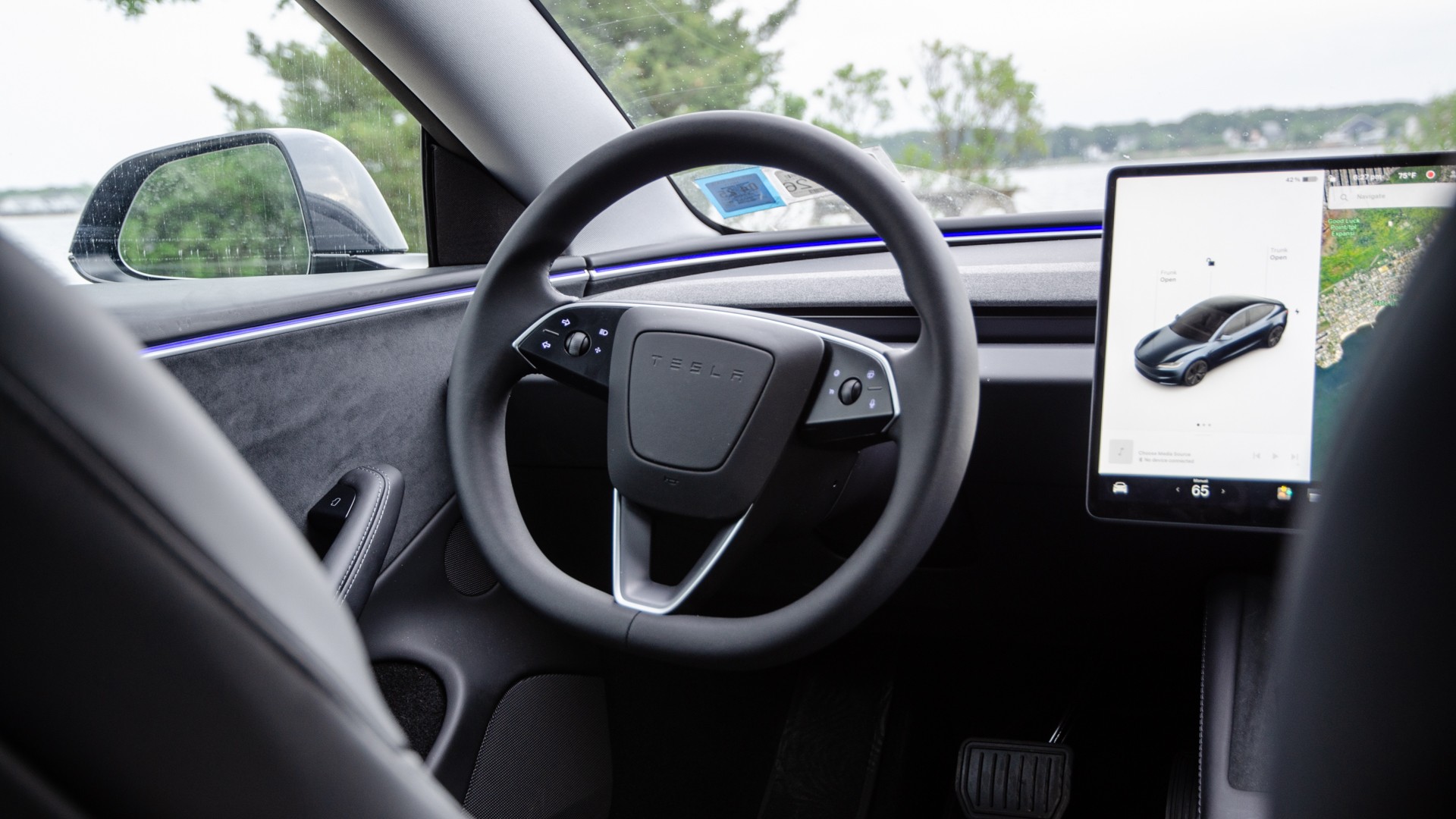 Tesla Model 3 navigating a turn, highlighting its sporty sedan profile and road presence.
Tesla Model 3 navigating a turn, highlighting its sporty sedan profile and road presence.
Autopilot and Full Self-Driving: Still Leading, But Not Perfect
Elon Musk’s much-discussed “Autopilot with Full Self-Driving” system was also evaluated. In its most comprehensive setting, allowing for maximum self-driving capability, I tested it in various conditions, from city streets to highways. For the most part, it performs admirably. Lane keeping is excellent, the system accurately displays its perception of the surroundings, it can stop at traffic lights, and it navigates traffic flow effectively. The system’s transparency, explaining its actions, such as changing lanes to maintain desired speed, is a welcome feature.
However, imperfections exist. On two occasions, the system misjudged highway lane splits, attempting to take an exit instead of continuing straight. Correcting these errors is met with resistance from the steering, and manual override disengages Autopilot, requiring reactivation. Tesla should also refine the throttle response, which even in “Chill” mode, exhibits overly aggressive acceleration from a standstill. I had to intervene when it attempted a rapid maneuver around a police car conducting a traffic stop. While impressive and among the best systems available, GM’s Super Cruise remains a more refined and nuanced autonomous driving experience.
Charging and Range: Tesla’s Key Advantages
The undeniable highlight of the Model 3 ownership experience is Tesla’s charging infrastructure. Utilizing a Tesla Supercharger is by far the most seamless public EV charging process. Simply arrive at a station, plug in, and walk away. No account setup, credit card fumbling, screen interactions, or mobile app usage is needed. Just plug in and charge. This simplicity explains why brands like Ford and Rivian are adopting the Supercharger network. Beyond charging, the Model 3’s quickness makes navigating traffic and highway merges effortless. Forward visibility is commendable. The dual wireless phone charging pad is a convenient feature, and the rear touchscreen will undoubtedly impress backseat passengers.
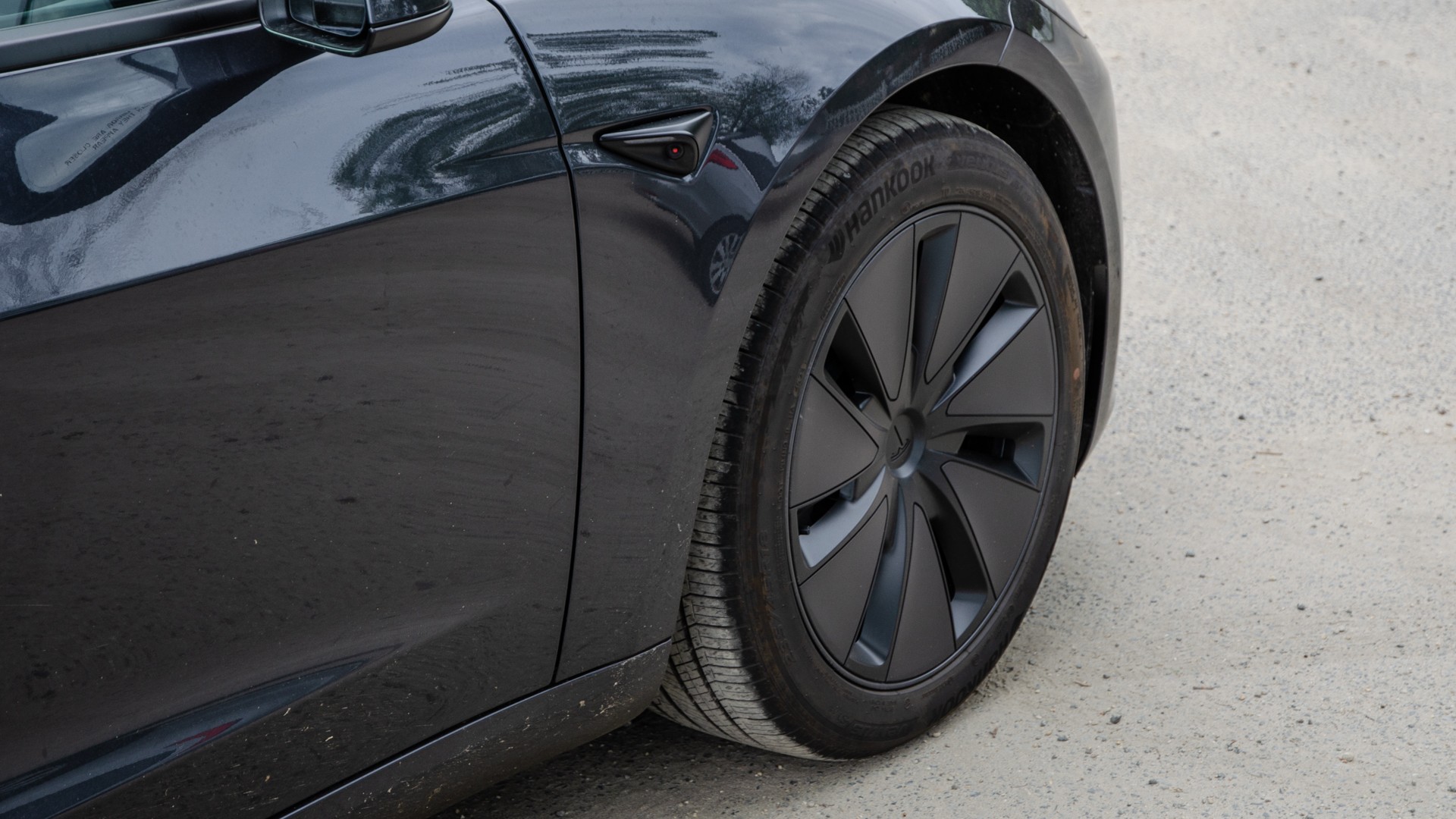 Multiple Tesla Model 3 vehicles charging at a busy Tesla Supercharger station.
Multiple Tesla Model 3 vehicles charging at a busy Tesla Supercharger station.
However, significant drawbacks persist. The interior feels cheap and under-equipped, particularly considering the price point. Even a base model Hyundai Kona offers a more pleasant interior, and the Model 3’s ergonomics are consistently frustrating. A sharp edge on the rear passenger door even resulted in a minor cut – perhaps a nod to the Cybertruck’s design ethos. Cabin noise is also excessive, with considerable wind and tire noise at highway speeds, despite the presence of double-pane windows. Furthermore, the rear car seat LATCH anchors are difficult to access and use.
Features, Options, and Value: Price and Competition
The Tesla Model 3 occupies a more accessible price bracket within the EV segment, starting at $40,380 before federal and state incentives. The long-range AWD model tested begins at $48,880 before incentives, but came to $57,130 as tested. It comes reasonably well-equipped with heated seats, the dominant touchscreen interface, a rear seat screen, and other tech features as standard. Currently, the Model 3 qualifies for the full $7,500 federal tax credit under the Inflation Reduction Act.
Options are limited for the Model 3. Choices primarily involve powertrain, color, wheels, and the “Full Self-Driving Capability” package. The latter, despite being a misleading overstatement, adds a hefty $8,000 to the price. All paint colors except Space Gray are extra-cost options, ranging from $1,000 to $2,000. The test car, in Space Gray with standard wheels and FSD, reached an as-tested price of $57,130.
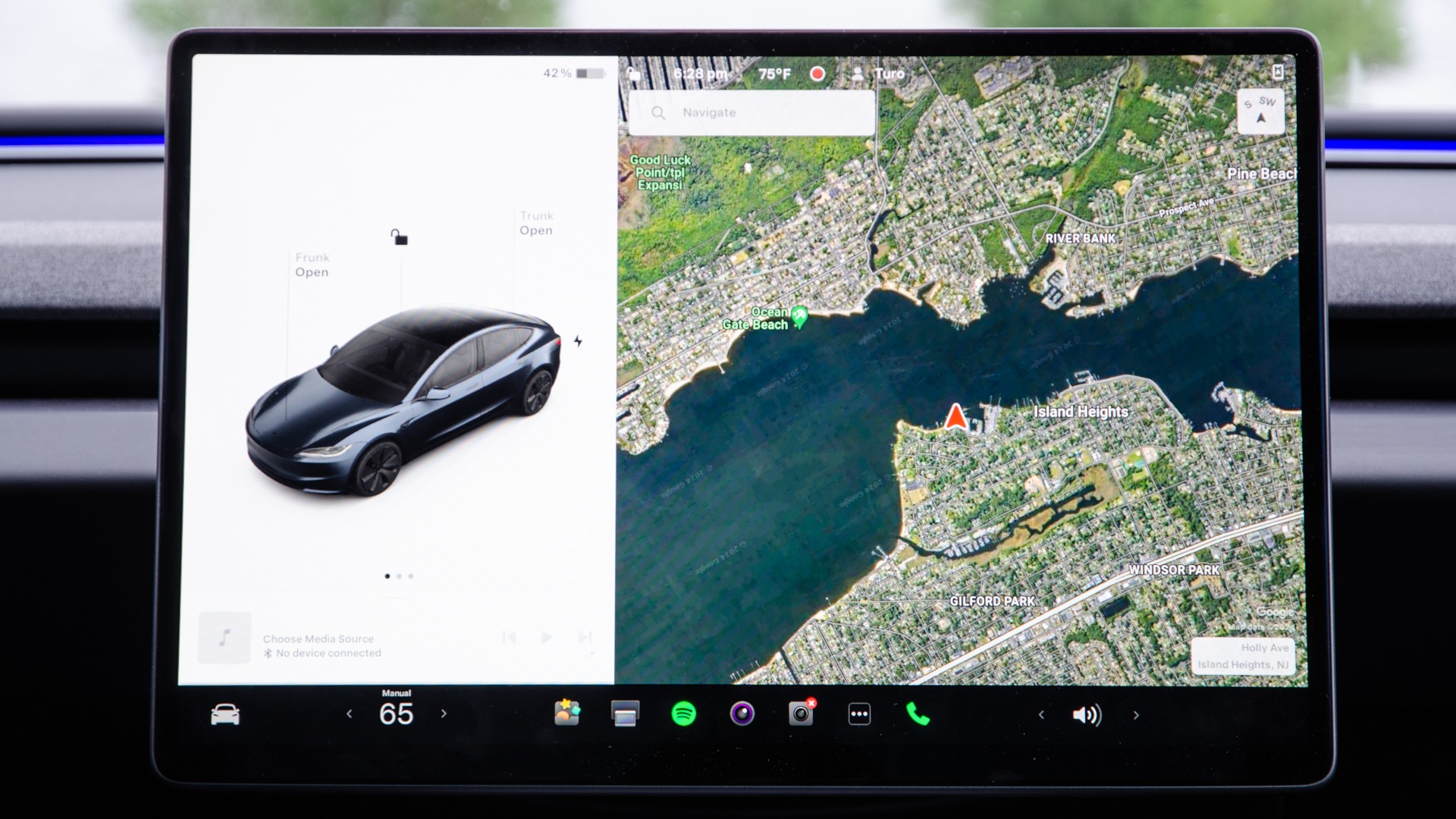 Tesla Model 3 badge on the rear of the vehicle, symbolizing the brand and model.
Tesla Model 3 badge on the rear of the vehicle, symbolizing the brand and model.
The closest competitor to the Model 3, considering price, performance, and overall quality, is likely the Hyundai Ioniq 6. The BMW i4 offers a more refined interior and superior sport sedan characteristics but carries a significantly higher price tag, starting above $60,000 for a dual-motor configuration. The Polestar 2 also approaches the $60,000 mark for an AWD version. Conversely, a fully equipped Hyundai Ioniq 6 Limited with dual motors can be had for under $55,000 before incentives. Its primary disadvantage compared to the Model 3 is a lower range, at 270 miles versus Tesla’s 341 miles. However, Hyundai vehicles will gain access to Tesla’s Supercharger network starting later this year, further leveling the playing field.
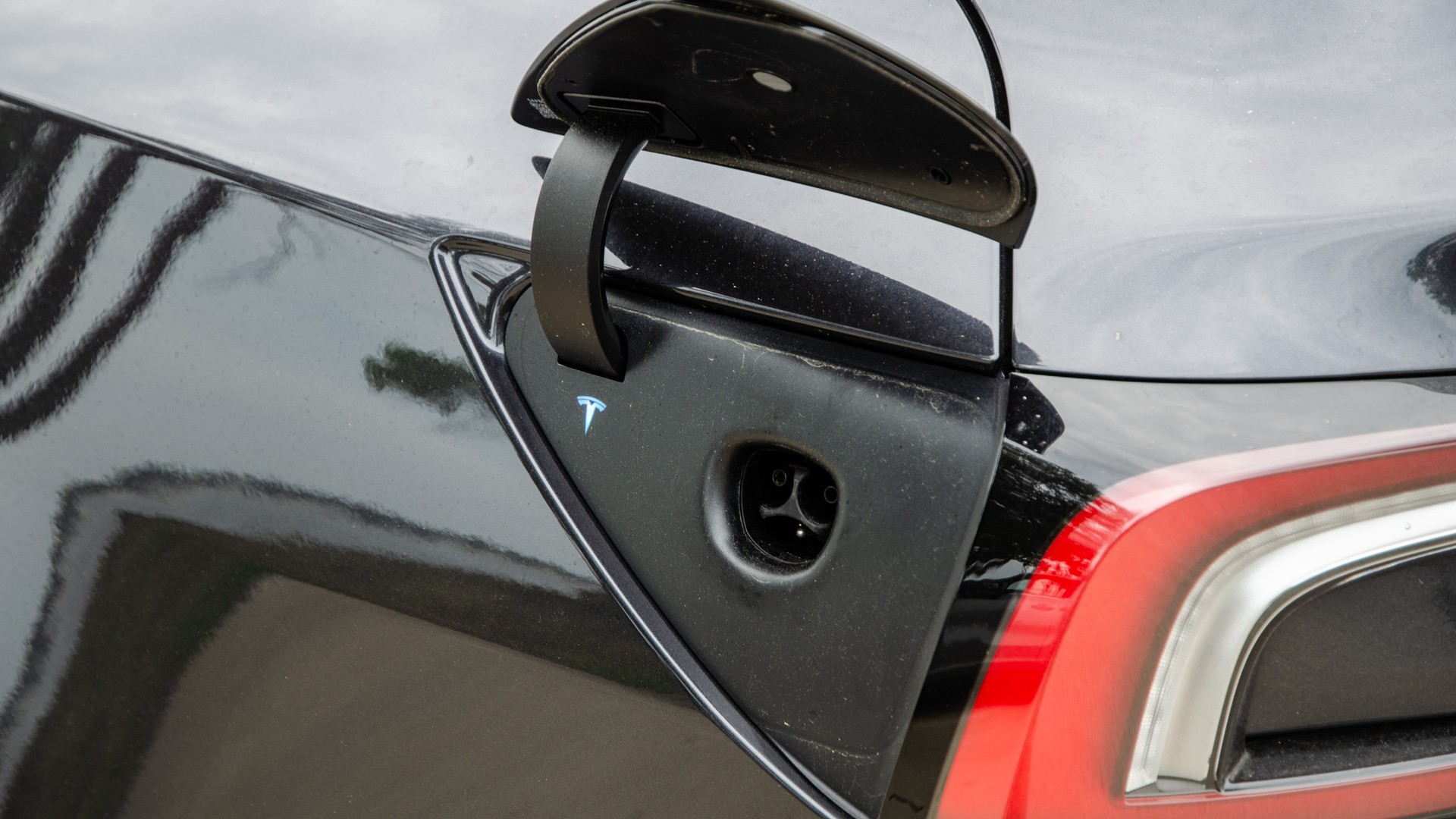 Tesla Model 3 charging port, emphasizing its compatibility with the extensive Supercharger network.
Tesla Model 3 charging port, emphasizing its compatibility with the extensive Supercharger network.
Value and Verdict
The 2024 Tesla Model 3 remains a fundamentally capable vehicle. It’s quick, handles adequately, and boasts impressive range. However, it’s burdened by a collection of irritations. Even unlocking the car is unnecessarily complicated, relying on a sometimes unreliable mobile app or a keycard that lacks keyless entry functionality. The interior materials feel as cheap as a budget car from decades past. With the emergence of compelling electric sedans from established automakers, the Model 3’s primary advantages are now limited to range and charging – admittedly, significant strengths. But as more manufacturers adopt the NACS port and gain Supercharger access, even the charging advantage is poised to diminish.
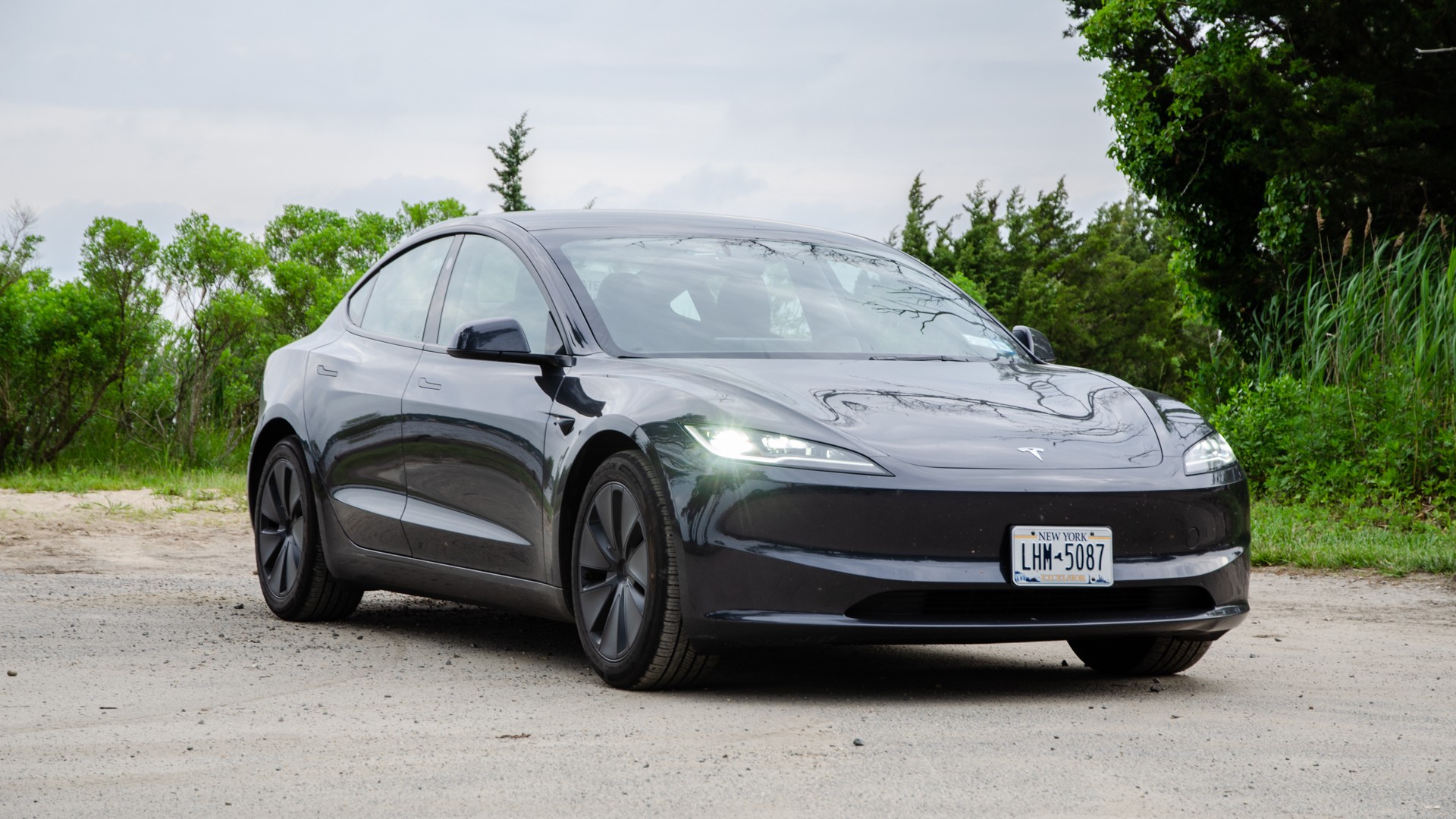 Front view of the 2024 Tesla Model 3 in Space Gray, representing its current standing in the competitive EV market.
Front view of the 2024 Tesla Model 3 in Space Gray, representing its current standing in the competitive EV market.
Everything appealing about the Model 3 – the smooth electric powertrain, decent handling, and zero-emission driving – is also true of the Hyundai Ioniq 6. While the Ioniq 6 may not match the Model 3’s outright range, it counters with greater affordability, a significantly nicer interior, a superior warranty, and a far more extensive dealer network (over 800 Hyundai dealerships in the US compared to roughly 240 Tesla stores). Subjectively, the Ioniq 6 also presents a more visually interesting design.
The Model 3’s historical significance in the EV market is undeniable; it was a game-changer upon its 2017 debut. But in the intervening years, the competition has caught up, and its unique allure has faded. Unless maximizing range in a compact electric sedan is your absolute priority, it’s increasingly difficult to justify choosing a Model 3 over its current and emerging rivals.
| 2024 Tesla Model 3 Specs | RWD | Long Range AWD |
|---|---|---|
| Base Price (as tested) | $40,630 | $48,880 ($57,130) |
| Powertrain | single-motor rear-wheel drive | 57.5-kWh battery | dual-motor all-wheel drive | 82-kWh battery |
| Horsepower | 271 | 394 |
| Torque | 310 lb-ft | 377 lb-ft |
| Seating Capacity | 5 | |
| Curb Weight | 3,891 pounds | 4,030 pounds |
| Cargo Volume | 21.0 cubic feet | 3.1 cubic feet (frunk) | |
| 0-60 mph | 5.8 seconds | 4.2 seconds |
| Top Speed | 125 mph | |
| Max Charging Speed | 170 kW | 250 kW |
| EPA Range | 272 miles | 341 miles |
| Quick Take | The Model 3 is still a good car but, now that its competition has caught up, it isn’t as special as it used to be. | |
| Score | 7/10 |